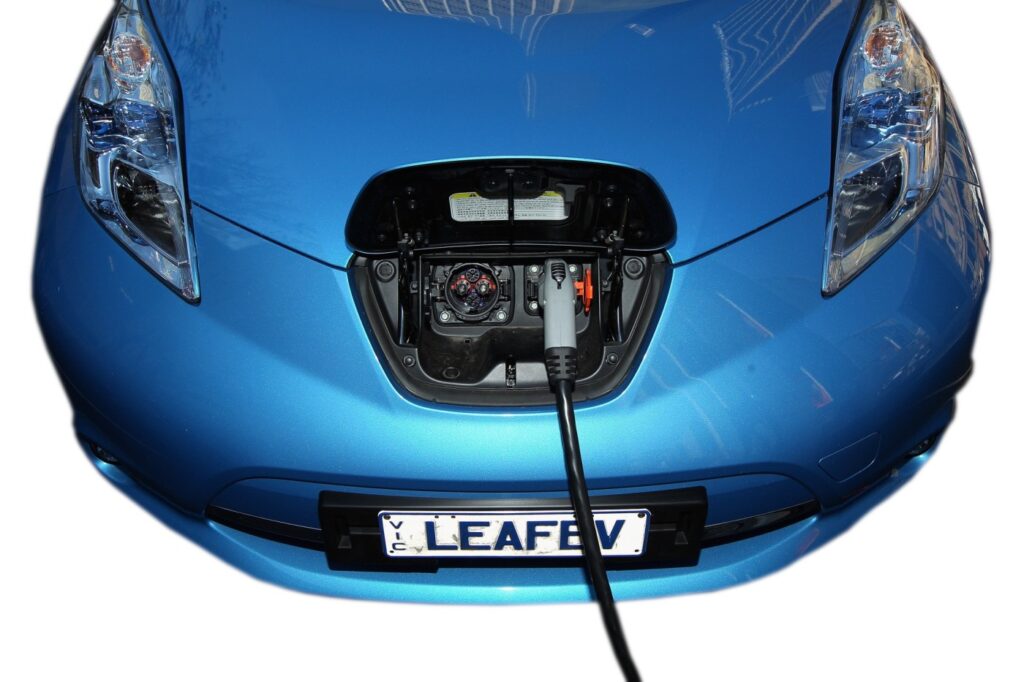
All-electric America?
Gas prices are sky high and gasoline-powered cars are one of the biggest sources of carbon pollution. The Biden Administration has set a target for EVs to make up 50% of all new car sales in the U.S. by 2030. Currently, about 7% of America’s registered vehicle owners own an electric vehicle.
In November 2021, Congress passed an infrastructure deal, which includes:
Replacing the government’s 650,000 vehicle motor pool with EVs.
Electrifying 20% of the country’s 500,000 school buses.
Investing $7.5 billion to build out a network of 500,000 electric vehicle chargers across the country.
But Americans are closely divided over the idea of phasing out combustion-engine vehicles by the year 2035. A June 2021 Pew Research Center report found 47% of U.S. adults support a proposal to phase out production of gasoline-powered cars and trucks, while 51% oppose it.
Battery Recycling
Currently, the U.S. is import-dependent with large parts of the battery supply chain captured by China. Some essential metals for EVs are currently extracted from countries that have poor labor standards and high carbon dioxide footprints. The $1.2 trillion infrastructure bill sets aside $6 billion for developing battery materials processing capacity in the U.S. Recycling could meet up to 30% of nickel and 80% of cobalt usage in electric vehicles by the end of the decade.
By 2030, the U.S. alone is projected to have more than 218,000 tons of EV battery manufacturing scrap and 313,000 tons of end-of-life EV batteries per year, presenting a massive opportunity for recycling.
The Environmental Protection Agency’s site has a page dedicated to electric vehicle myths. It includes the chart below that compares greenhouse gas emissions over the lifetime of a vehicle. These calculations can vary depending on the source of electricity to charge the car.
America’s EV future
According to President Joe Biden, the auto industry’s future “is electric, and there’s no turning back.” Biden’s goals call for zero-emission vehicle sales in the U.S. to grow from about 340,000 in 2020 to about 8.8 million (50% of all new vehicle sales) a year by 2030. In 2022, zero-emission car sales are on the rise, but 4% of the market.
More models to choose from
Everyone from Acura to Volvo is making alternative fuel and hybrid models. The number of alternative fuel vehicles and hybrid electric vehicle models grew 250% between 2010 and 2014 as the U.S. emerged from the economic recession. There was an all-time high of 220 models in 2019.
Hard to find an EV or any car
As of February, U.S. vehicle inventory levels were down about 60% from 2021 and 70% from 2020 to roughly 1.1 million vehicles.According to hotcars.com, the wait time for 2022 Tesla Model 3 is about six months and all-wheel drive models are even longer.
Plug-in favorites
Sales of plug-in electric vehicles grew rapidly from 2011 to 2018. Technology improvements, cost reduction, increasing model choice, maturing charging infrastructure and economic recovery have continued to influence and support increased sales. Until 2018, the Chevrolet Volt had been on the market the longest and had the most overall sales, but the model was discontinued in 2019. In 2018, the newly introduced Tesla Model 3 rapidly increased vehicle sales and established the vehicle as the best-selling plug-in electric vehicle with nearly 50% of the market share.
Electric vehicle registrations in the U.S.
Total electric vehicle registrations per 1,000 people, 2021.
States with the most: California had approximately 425,300 light-duty electric vehicle registrations in 2020, which is approximately 42% of EVs nationwide. Florida has the second-highest count, followed by Texas.
Europe overtaking China as the biggest market
After a decade of rapid growth, in 2020 the global electric car stock hit the 10 million mark, a 43% increase over 2019, and representing a 1% stock share. China, with 4.5 million electric cars, has the largest fleet, though in 2020 Europe had the largest annual increase to reach 3.2 million. In the U.S., as of December, there were approximately 2.32 million plug-in electric cars on the road.
This surge in electric car registrations in Europe, despite the economic slump, reflects two policy measures:
2020 was the target year for the Eu’s CO2 emissions standards that limit the average carbon dioxide emissions per kilometer driven for new cars.
Many European governments increased subsidy schemes for EVs as part of stimulus packages to counter the effects of the pandemic.
Global EV sales reached 6.75 million units in 2021, 108% more than in 2020.
In the U.S., federal incentives decreased in 2020 due to the federal tax credits for Tesla and General Motors, which account for the majority of electric car registrations, reached their limit.
Sources: Pew Research Center, International Energy Agency, U.S. Department of Energy, The Associated Press, whitehouse.gov, autosinnovate.org
